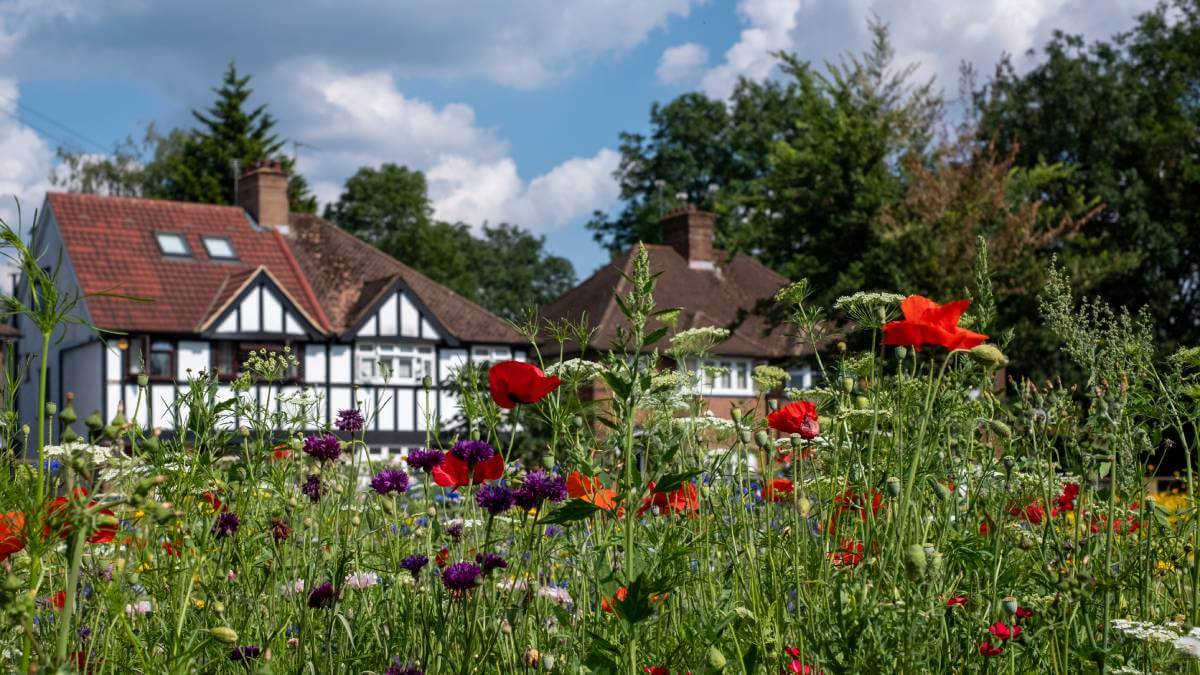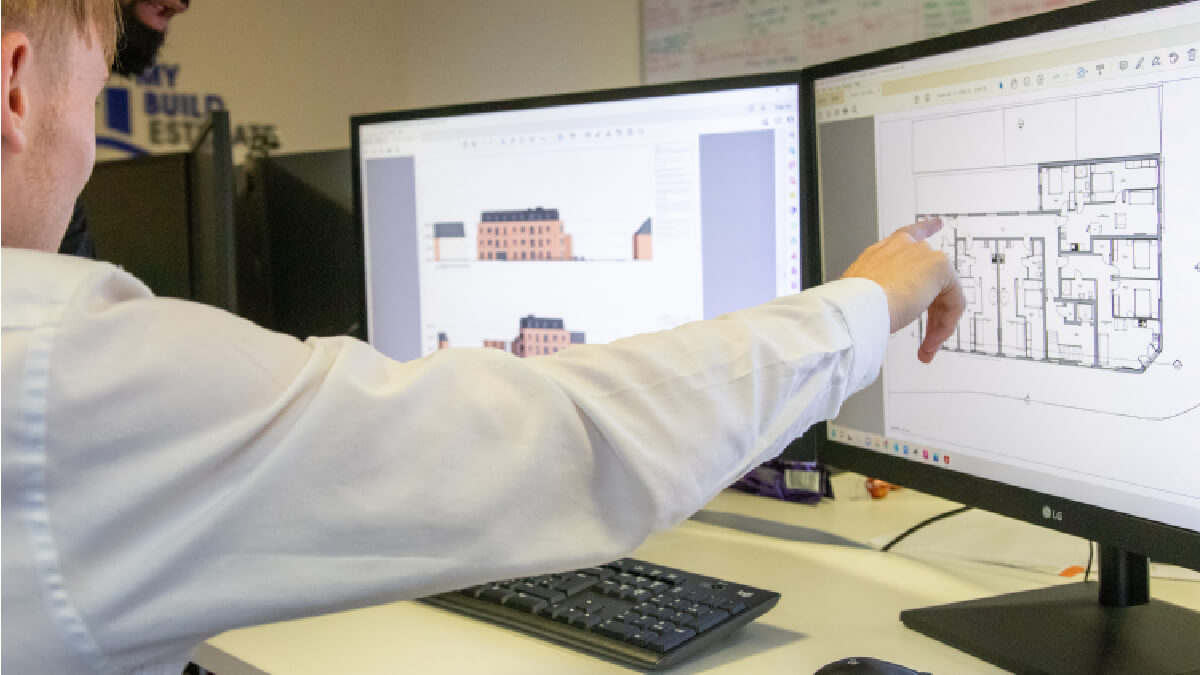If you’re in the early stages of applying for planning permission and the whole process is starting to feel a little overwhelming, you’re not alone – trust us! From gathering the correct drawings to liaising with local authorities, navigating the realm of planning permission can be challenging to get your head around, even more so if you’re tackling a complex project with its own hurdles – but it’s not impossible.
In this article, we aim to demystify the world of planning permission to make the process as simple and stress-free as possible. We’ll run through how to get planning permission, along with what you can expect afterwards.
Our Step-By-Step Guide On How To Get Planning Permission
Having worked closely with hundreds of clients to gain planning permission, we understand that having applications rejected or complications in starting your project can be incredibly disheartening. That’s why we have made it our mission to share our knowledge as much as possible, ensuring that you have support every step of the way, starting with the following:
- What Is Planning Permission?
- Do I Need Planning Permission?
- How To Get Planning Permission
- How Long Does Planning Permission Take?
- How Long Does Planning Permission Last?

What Is Planning Permission?
Planning permissions in the UK is the legal and formal process you must go through to gain approval from your local planning authority before making certain developments or changes to your property. It is most commonly required if you are building a new property from scratch, making a significant change to your building, such as an extension, or changing the use of your property. This process is designed to control how land and buildings are used and developed, ensuring that new developments align with local planning policies and regulations.
Do I Need Planning Permission?
Planning permission typically becomes necessary when introducing additions or significant alterations to your property. However, we strongly advise against overlooking a planning permission application, even if your intentions don’t involve adding elements to your building. Having your plans approved as a precautionary measure is safer and wiser.
What Do I Need Planning Permissions For?
Let’s delve into the range of projects that need planning permissions and explore the requirements for each category:
Extensions
For an extension, there are several factors you will need to adhere to in order to have your planning permission application approved. These include:
- Ensuring your extension is no more than half the area of land around the original house (the ‘original house’ refers to the house seen as it was after 1948).
- Your extension’s roof is not higher than the existing buildings.
- The extension is not in front of the existing house or the side of the house onto a highway.
- The maximum height of a single-storey extension is not taller than four metres.
- No verandas, balconies, or raised platforms will be added to the extension.
- The materials must look similar to the existing house.
Listed Buildings
When it comes to listed buildings, any plans for works that alter, extend or demolish the existing structure are unlikely to be approved. Local planning authorities and national heritage agencies, such as Historic England in the UK, work to provide evidence, assess buildings’ significance, and grant or deny permissions for alterations on listed buildings. Without the proper consent for alterations or unauthorised demolition or alterations, it can result in legal action being taken and penalties being given. To find out if a building is listed, search the list by Historic England.
Nevertheless, if you do have a listed building project in mind, we would still encourage contacting our architectural technicians, as there may be ways to work around planning guidelines. We also recommend taking a look at our previous article to learn more about listed buildings and the planning guidelines revolving around historic sites.
Conservation Area
Conservation areas exist to protect places known for their architectural or historical value. This means that, much like listed buildings, the likelihood of getting planning applications approved is much lower.
Certain limitations come into play, even impacting alterations that might typically fall under permitted development rights. These constraints cover a range of aspects, including external cladding, constructions along the sides of properties, multi-storey rear extensions, rooftop extensions, and installations like solar panels and satellites angled towards the highway.
If you have a project in mind that falls within a local conservation area, then you will need to begin the hunt for architects in Milton Keynes. Our team of skilled architectural technicians would happily handle all drawings and applications on your behalf, working closely with you to ensure that your plans balance your vision with planning guidelines.

What Can I Build Without Planning Permission?
There are some cases and projects that will not require planning permissions. Usually, these are more minor alterations to your property; however, we strongly advise consulting both our team and local authorities to ensure your specific case does adhere to this. Let’s dive into the situations and plans that usually can be built without planning permissions.
Garage Conversions, Sheds and Other Structures
For the majority of cases, constructions such as sheds, garages, greenhouses and garden rooms, commonly referred to as outbuildings, are usually completed under permitted development rights. This means that seeking separate planning permission may not be necessary. This will only be effective if your outbuilding or garage is reasonably sized, not exceeding four metres.
Windows and Doors
For windows and doors, the requirement for planning permissions typically does not extend to tasks such as repainting, basic maintenance, repairs, or minor enhancements. Similarly, the insertion of new windows or doors that are similar to the appearance of the existing windows and doors, as well as the introduction of internal secondary glazing, often falls within the realm of permitted development.
Nonetheless, it is important to note that a bay window will be treated as an extension and may require planning permissions. Additionally, new windows in upper-floor side elevations should be obscure-glazed and subject to a certain height and opening restrictions; they should either remain non-opening or not open beyond 1.7 meters above floor level.
Rear and Side Extensions
Rear and side extensions that align with certain criteria are generally more likely to gain approval from planning authorities and can usually even fall within permitted development rights. This implies that your plans for a rear or side extension should adhere to the following conditions:
- It should be situated at the rear or side of the house, not the front.
- The extensions cannot go beyond the rear wall of the existing house and should not exceed 3m for an attached house and 4m for a detached house.
- The materials used for the extension must be similar to those of the existing house.
- The extension’s height should not surpass 4 meters.
- Both the eaves and the ridge of the extension should maintain a height consistent with that of the existing house.

How To Get Planning Permission
Knowing and understanding how to get planning permission is vital and allows the process to run smoothly. Here is what you can expect:
1. Speak With Architectural Technicians:
Regardless of whether you are certain you need planning permission or not, enlisting the support of architectural technicians will always work towards your advantage. They can discuss your plans in detail, help you understand the possibilities and start putting together drawings.
With this in mind, if you are looking for architects in Northampton, Milton Keynes or the surrounding areas, do not hesitate to contact our architectural technicians to make your first steps towards project success.
2. Contacting Your Local Authority:
Before making a start on any applications, we always recommend reaching out to your local authority to get a better insight into the likelihood of your approval. If there are any clear hurdles, you can factor these in when putting together your documents, helping to save time and maximise your chances of success.
3. Filling In An Application:
You can now make any necessary changes to your plans to boost your chances of success and start to fill in the application for planning permissions. The majority of these applications are completed online using Planning Portal. For this application, you will need to provide details on your project’s location and site plan, an ownership certificate supplying evidence of ownership over the property, an agricultural holdings certificate and the application fee.
4. Application Assessment:
From here, your application will be sent off and reviewed by the relevant local planning authority. The outcome of your application is based on several factors, including noise, loss of privacy, impact on lost buildings and Government policy. In England and Wales, your neighbouring residents may be spoken to regarding the plans of your project; if any objections are in line with the considerations listed above, they will be considered in the decision.
5. Application Decision:
If your application has been approved, great news, your project can commence. However, if it is rejected, you will go back to the drawing board and see whether any alterations can be made to overturn the inspector’s decision.
At Amico Design, we would only ever put a project forward that we feel can be approved. This means that we will happily liaise with inspectors and local authorities on your behalf to come to an agreement.

How Long Does Planning Permission Take?
Navigating the start of your project timeline might cause concerns, especially considering the potential duration of planning permission application reviews. The process can appear intricate, but understanding the general timelines can help manage expectations.
Smaller household and minor applications should be decided and reviewed within 8 to 10 weeks of submission. In cases of more significant or major developments, the deliberation period extends to around 13 weeks. It’s important to note that if your application is subject to an environmental impact assessment, it should be reviewed within 16 weeks.
This time is determined by how long local authorities take to internally and externally assess your application. The external discussion enables your application to be seen by individuals or companies, such as your neighbours, who have the opportunity to contribute comments or concerns. For the internal review, your application is viewed by a planning officer who will research the area and how your plans will fit alongside the external comments. Meetings will also be held with other planning officers for additional assessment and comments.
How Long Does Planning Permission Last?
In the UK, planning permissions have an expiration date determined by your local authorities. This means that if construction hasn’t begun between getting your application approved and the expiration date, your plans will not be valid anymore, and you will need to re-apply if you wish to proceed with the project.
Currently, planning permissions last for three years before they expire. This three-year limit emerged as a change from the prior five-year span in 2009. The historical backdrop reveals that before the 1960s, no cut-off existed for planning permissions. However, the beginning of the five-year rule in 1968 was precipitated by many instances where homeowners secured planning permissions but failed to initiate the developments. This measure addressed this and fostered more responsible and timely development practices.

Your Successful Application
With an impressive 97% approval rate, it is evident that our team of experts demonstrate an excellent track record of guiding clients through the intricacies of the planning permission application process. We hope this article has proved helpful to you in navigating and understanding planning permissions; however, if you need further assistance or have additional queries, ensure to contact our team of architectural technicians and get started on your journey towards a successful application!
